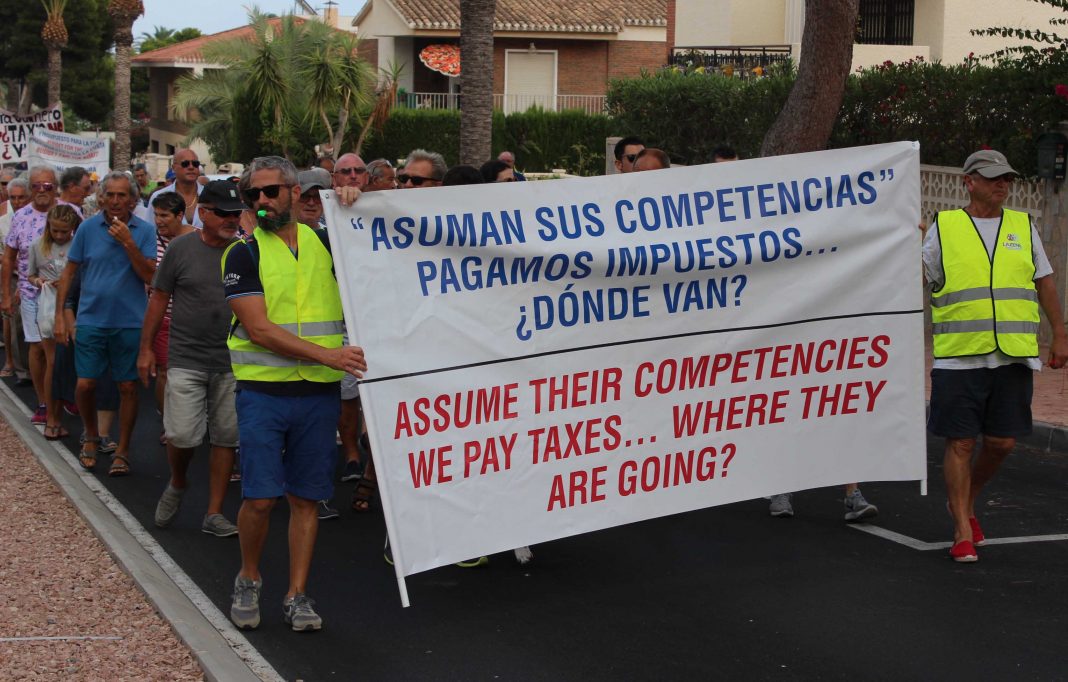The trigger was a fight at the festival to celebrate the Bajada de la Virgen de Los Reyes, patron saint of the island of El Hierro, among the residents of the towns of El Golfo (Frontera) and El Pinar.
The quarrel caused the residents of El Pinar to resume an old independence aspiration to segregate from the City of La Frontera, by which it was governed. Its constitution as an independent municipality was finally approved in September 2017.
The case of El Pinar is not exceptional, since 1977 more than a hundred municipalities have become independent from other localities, according to information gathered from the National Institute of Statistics (INE). All these processes of segregation are regulated by law, must be justified and cannot suppose a modification of the provincial borders.
In the case of El Pinar, the process of independence began with a simple quarrel. According to tradition, the image of the Virgin travels through the different towns of El Hierro accompanied by dancers from each locality who, upon reaching the border of the next municipal area, must hand over to the dancers of the next town. In July of 2005, the dancers of the municipality of El Golfo insisted on dancing on, into an area where the dancers were traditionally from El Pinar, arguing that their municipality had a larger population.
This provoked the indignation of the residents of El Pinar who agreed that they were no longer willing to suffer dishonour at the hands of their larger and more powerful neighbours and they began steps to be constituted as their own municipality. After collecting the signatures of most of the residents, the petition for segregation was presented to the regional authorities, who finally approved by absolute majority the agreement in April 2007.
The Law states that the creation of new municipalities can only be done on the basis of territorially differentiated population centres and provided that the resulting municipalities have sufficient resources for the support of municipal competences, and does not suppose a decrease in quality of the services that had been provided. In addition, since the 2013 reform, in order to become independent a locality must have at least 5,000 inhabitants and the resulting municipalities must be financially sustainable.
The decision must also have the approval of the Autonomous Community to which the municipality belongs and be notified to the Government.
However, Independence has not always been easy for the municipalities that have sought it in the past and in some cases the conditions imposed by the law have been an insurmountable obstacle to the process, especially after the conditions imposed with the 2013 reform.
According to a report released on 1 January 2018, there is currently a total of 8,124 self-governing municipalities in Spain, 84% of which have less than 5,000 inhabitants. They are represented by over 66,000 elected councillors.
One of the more local municipalities to be granted its independence most recently is Balanegra which they achieved the end of 2015, twelve years after their referendum, approving their first budget as a municipality with an expenditure of 2.7 million euros .
This municipality in Almería, with 2,835 inhabitants, 23.55 square kilometres of surface area and 2,200 meters of beach, became independent from the municipality of Berja (Almería) in 2015. However the process began much earlier in 1987, with the establishment of Balanegra as an Entidad de ámbito Territorial (EATIM), a Territorial Entity within the municipality but a distance of 22 kilometres from Berja which, according to the Spanish Federation of Municipalities and Provinces (FEMP) at the time, made the management of services very difficult.

Nearly three-quarters of Balanegra’s residents showed their support for independence at a referendum in 2004.
Referendums have been common within municipalities that have become independent in recent years. This was also how Marchamalo in Guadalajara separated themselves from the city of Guadalajara in 1996. An olive tree planted in January 1999 in the town square celebrates their independence.
Closer to home On 30 July 1986, after many years of negotiations, the town’s 6,000-plus citizens gained their reward and Pilar de la Horadada was awarded the status of Municipality, thus gaining its own Town Hall and divorcing it completely from Orihuela.
Since then the municipality has grown continually and sustainably. Only 20 years ago just 8,000 people lived there, but the ever wider range of services now cater for as many as 70 nationalities among the more than 23,000 inhabitants, all of whom enjoy the local holiday which is celebrated every 30th July in commemoration of the separation from Orihuela.
Could the Orihuela Costa be next we wonder? In recent years, there has been growing support for the “independence” of Orihuela Costa from Orihuela itself. This is due to the perception among the largely foreign born population of Orihuela Costa that they are being unfairly treated by the local government.
For example, not to long ago, the Orihuela Costa’s share in the 2010-2014 municipal budget was 6x less than that for the city itself, or 4,2% of the 295 million € budget, even though the Costa creates around 30% of municipal tax income.
As the public unrest continues on the coast, there are more and more demonstrations taking place on a regular basis, with local political and residents groups becoming increasingly vocal about a situation which they deem to be extremely unfair, robbing the area of essential services and buildings such as the footbridge over the N332 at Lomas de Cabo Roig, a second Medical Centre, an Auditorium, full time Library, Casa Cultura, Bus station or even a Cemetery, let alone the Emergency Services Centre which has been promised for very nearly 10 years.





